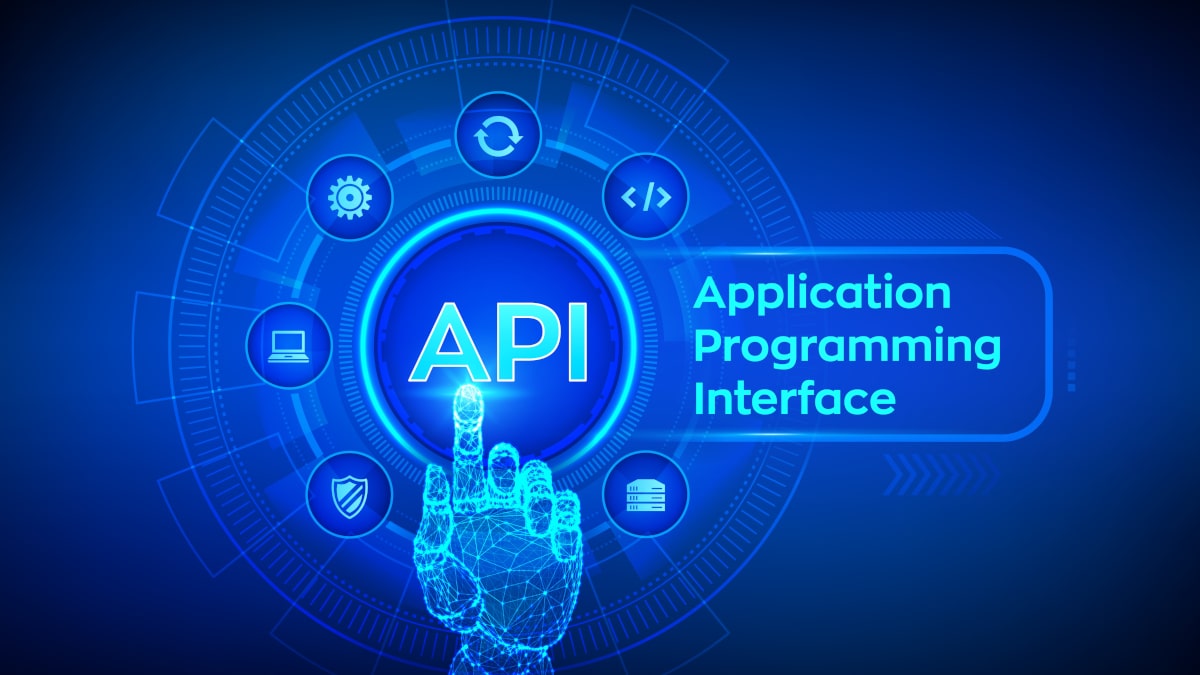API (Application Programming Interface) has revolutionized the way computers interact and communicate with each other in modern digital systems. It is a set of protocols, routines, and tools for building software applications. APIs help applications communicate with each other and enable seamless integration of different software systems, which is why they are becoming increasingly important in modern digital experiences.

Before the advent of APIs, software developers had to write complex and time-consuming code to integrate different software systems. The creation of APIs allowed for the development of code that could be used repeatedly and called upon as needed, saving developers time and effort. The first APIs were created for specific software systems. However, as technology evolved, APIs became more accessible, and cross-platform APIs were developed. APIs have become even more important in developing cloud-based applications and services in recent years, bridging the gap between different software platforms and enabling seamless communication. In this article, we will explore the innovative uses of API communication in reshaping digital experiences.
The traditional role of APIs in digital experiences.
Interconnectivity between software applications has been a significant challenge in the past, particularly when it comes to the exchange of information between systems built on different technology platforms. This is where APIs emerged as a crucial solution for solving this challenge.
APIs primarily enable interconnectivity between software applications, allowing them to communicate and exchange data. Data exchange can occur in various formats, including text, audio, and video. With the help of APIs, developers can now connect different software applications and enable seamless data exchange.
Older protocols such as REST and SOAP were major in facilitating this communication between software applications. REST (Representational State Transfer) is a popular protocol for creating web services. At the same time, SOAP (Simple Object Access Protocol) is an XML-based web protocol used to exchange structured information between web services. These older protocols paved the way for developing newer, more efficient APIs, which we will explore in the next section. Despite newer technologies maturing, these protocols remain the backbone for many APIs, showcasing their longevity and significance in the digital landscape.
The emergence of modern API communication trends.
As digital experiences continue to evolve, so does the landscape of API communication. Modern trends reshape how data is queried, transferred, and utilized, leading to more efficient and dynamic digital experiences.
One significant trend in API communication is the rise of GraphQL. GraphQL is an open-source query language that enables clients to request specific data they need, minimizing over-fetching and under-fetching of data. This flexibility empowers developers to optimize performance and reduce bandwidth usage, resulting in faster and more efficient data queries. With GraphQL, developers can precisely define the structure and shape of the data they require from the server, enabling more flexible and tailored requests.
Another emerging trend is gRPC, a high-performance open-source framework originally developed by Google. gRPC focuses on efficient data transfer and communication between systems, making it ideal for large-scale distributed systems. Using the Protocol Buffers format, gRPC enables efficient binary serialization, reducing payload size and bandwidth requirements. This streamlined approach to data transfer enhances performance and scalability, making gRPC increasingly popular for microservices architecture and cloud-native applications.
In addition to efficient data transfer, real-time APIs have gained prominence in reshaping digital experiences. Technologies like WebSockets and Server-Sent Events enable real-time communication between clients and servers, making dynamic web applications more responsive. WebSockets establish persistent two-way communication channels, allowing servers to instantly push client data updates. On the other hand, Server-Sent Events provide a unidirectional stream of data from the server to the client, facilitating real-time updates. These real-time API technologies enable interactive and engaging user experiences like live chats, dashboards, and collaborative applications.
Personalization through APIs.
API integrations allow for tailored user experiences, making them a valuable tool for businesses looking to engage customers more personally. By leveraging APIs, companies can customize their products and services to meet specific customer needs, preferences, and behaviors.
One example of API-driven personalization is content recommendations. Machine Learning and AI APIs enable businesses to analyze and understand user behavior and preferences, providing personalized content recommendations based on their interests and past behaviors. APIs like Amazon Personalize, Google Cloud Recommendations AI, and IBM Watson Studio offer pre-built models and algorithms that can be integrated into applications to make personalized content recommendations.
In addition to content recommendations, APIs can optimize the user journey by providing tailored experiences at various touchpoints. Businesses can optimize their products and services by tracking user behavior and preferences to enhance the user experience. APIs like Microsoft Personalizer and AWS Step Functions orchestrate personalized user paths based on data and feedback, enabling businesses to optimize user journeys.
API-first development and its impact on UX.
API-first development is a development approach that prioritizes the design and implementation of APIs before anything else in the development process. By focusing on the API layer, developers can create flexible and scalable architectures seamlessly integrating front-end and back-end components. This API-centric approach reshapes digital experiences and revolutionizes how applications are built and deployed.
One of the key advantages of the API-first approach is the seamless integration between front-end and back-end components. By designing APIs first, developers can establish clear contracts and interfaces for data exchange between different application parts. This decoupling enables front-end and back-end teams to work independently, leading to more efficient development cycles. The front-end team can start building user interfaces based on the agreed API contract, ensuring smooth integration with the back-end logic. This separation of concerns allows for parallel development and simplifies versioning and maintenance.
Furthermore, the API-First approach enables speedier product iterations and agile development. Since APIs define the contract between various components, changes to one component can be made without impacting the others. This flexibility and modularity facilitate rapid iterations and updates. Developers can introduce new features or improvements to the API layer without disrupting the front-end experience. This agility enables organizations to quickly adapt to changing market needs and deliver frequent updates to users.
Additionally, an API-First approach encourages reusability and interoperability. APIs can be designed with a focus on reusability, allowing different applications or services within an organization to leverage existing APIs for their purposes. This promotes an ecosystem of interconnected services and helps reduce development time and effort. Moreover, following industry standards and best practices, APIs become interoperable, enabling integration with third-party services and fostering innovation through collaboration.
Multi-platform consistency.
Maintaining brand and experience consistency across various devices and platforms is crucial for businesses in today’s digital landscape. APIs play a vital role in achieving this consistency by enabling seamless communication and data exchange between different systems and platforms.
By leveraging APIs, businesses can ensure that their brand identity, content, and user experience remain consistent across multiple devices, such as websites, mobile applications, smart devices, and more. APIs allow for the synchronization of data and content across these platforms, ensuring a unified and consistent experience for users, regardless of the device they are using.
The rise of headless CMS (Content Management System) and commerce systems further reinforces the API-driven approach to achieving multi-platform consistency. Headless CMS, in particular, decouples the content management capabilities from the presentation layer, allowing content to be managed and delivered via APIs. This separation enables businesses to reuse and distribute content across multiple platforms, ensuring consistency in messaging and branding.
The role of APIs in Augmented and Virtual Reality (AR/VR).
Augmented Reality (AR) and Virtual Reality (VR) technologies have the potential to revolutionize the way we interact with digital content. APIs enable these technologies to deliver truly immersive experiences by providing real-time updates and data integrations.

AR/VR technologies rely on a large volume of data, from user to real-time sensor data, to deliver immersive experiences. APIs enable the integration of this data, enabling AR/VR applications to access and process the information they need to create immersive experiences for users.
APIs also enable real-time updates and interactions in virtual worlds. With APIs, virtual worlds can be populated with real-world data, constantly updated in real time. This allows AR/VR applications to create dynamic and engaging experiences that respond to user behavior, providing a more personalized and interactive experience.
Moreover, APIs help overcome the challenges of interoperability that AR/VR technologies face. As the industry is still in its early stages, diverse hardware and software systems need to communicate with each other to deliver a seamless AR/VR experience. APIs can be the intermediary, allowing devices and systems to share data and commands and facilitate communication and collaboration.
In addition, APIs allow developers to build custom integrations and applications that can help improve the user experience by incorporating external data and services. For example, social media APIs can import a user’s social data into an AR application, adding extra layers of personalization and engagement.
Lastly, APIs can also facilitate the development of cross-platform AR/VR applications. Developers can create applications seamlessly across different platforms, from mobile devices to immersive headsets, by developing APIs that can communicate with different hardware and software systems.
APIs in IoT and the connected world.
The Internet of Things (IoT) is revolutionizing how devices and objects interact with each other and humans. APIs play a crucial role in facilitating inter-device communication and enabling the creation of smart environments.
In an IoT ecosystem, where devices such as sensors, actuators, and wearables are connected to the internet, APIs act as the communication bridge that allows these devices to exchange data and commands. APIs enable devices to send and receive data, control other devices, and collect information from the environment, enabling seamless interaction and collaboration between devices.
APIs also play a critical role in enabling the creation of smart environments. Businesses and individuals can create intelligent ecosystems that automate processes, enhance efficiency, and deliver personalized experiences by connecting various devices and systems through APIs.
One aspect of IoT where APIs are essential is edge computing. Edge computing refers to processing data closer to the device or sensor that generates it rather than sending it to a centralized cloud server. APIs enable seamless communication between edge devices and cloud services, allowing for real-time data processing, analytics, and decision-making.
APIs in edge computing also enable low-latency communication, which is crucial for IoT applications that require real-time responsiveness. Data can be processed locally by leveraging APIs, reducing the need for back-and-forth communication with a remote server and enabling faster and more efficient decision-making at the edge.
Furthermore, APIs enable interoperability and integration in the rapidly expanding IoT landscape. With the proliferation of IoT protocols, standards, and devices, APIs provide a common language that allows seamless integration and data exchange across different devices and platforms, regardless of the underlying technologies used.
APIs in IoT also extend beyond device-to-device communication. They enable integration with other systems, such as enterprise software, cloud services, and third-party applications, which unlock additional functionalities and enable new use cases. This integration enables businesses to leverage IoT data across different applications and systems to gain insights, optimize processes, and deliver enhanced customer experiences.
Conclusion.
API communication has redefined the digital landscape, reshaping how businesses interact with customers and deliver digital experiences. By integrating and leveraging APIs, businesses can access vast amounts of data, tap into external services, and create seamless experiences that are personalized, efficient, and innovative. As the API landscape evolves, businesses must stay updated, adapt to new trends, and prioritize API communication in their digital strategy to drive success in the digital world.
Leave a Reply